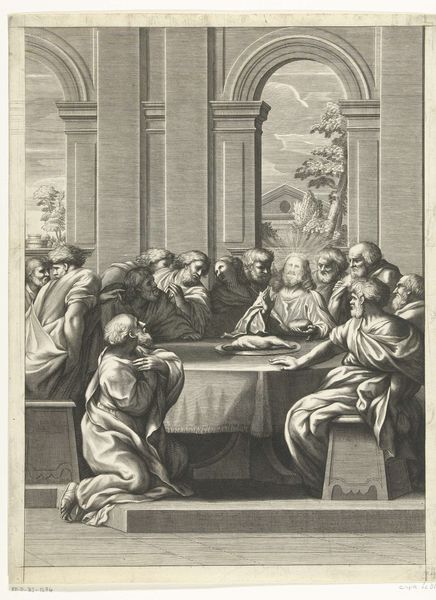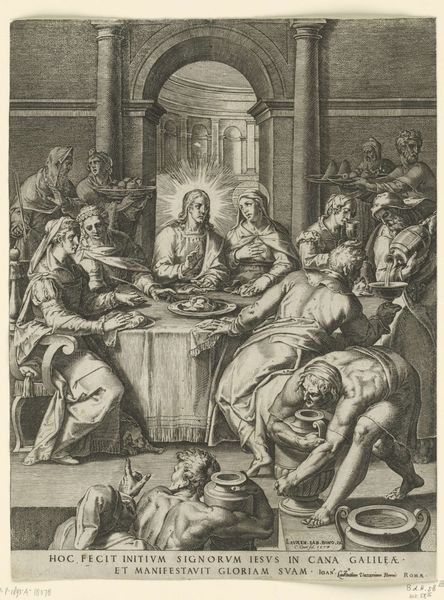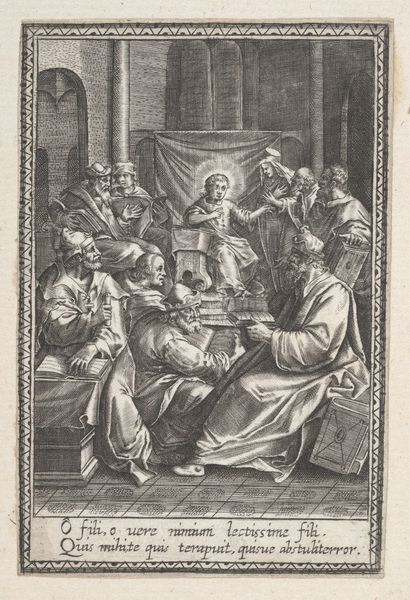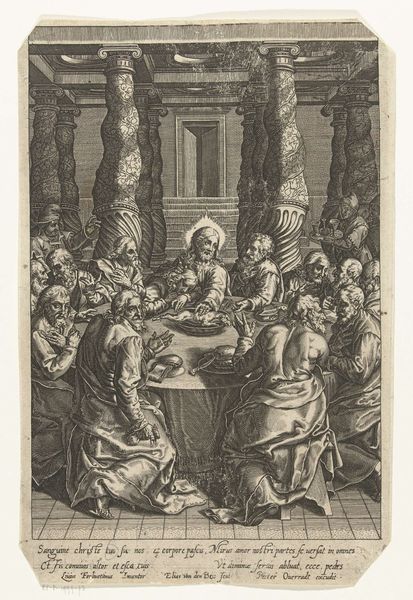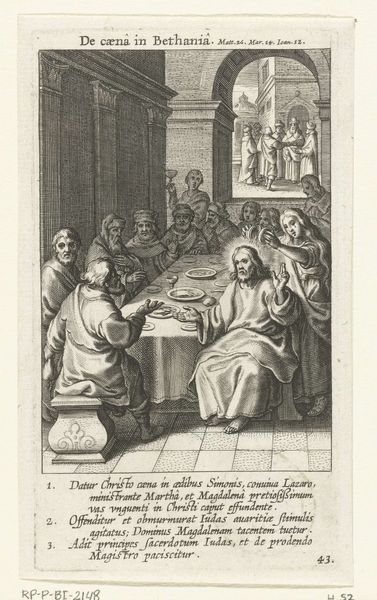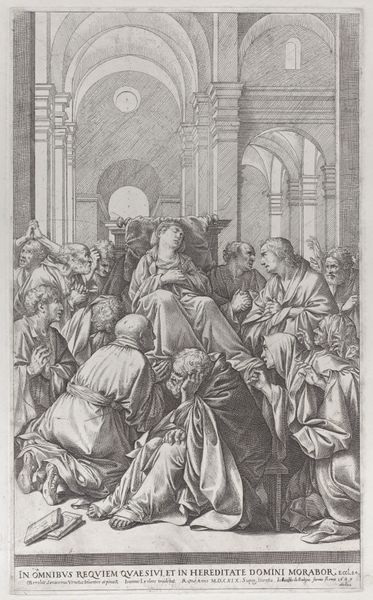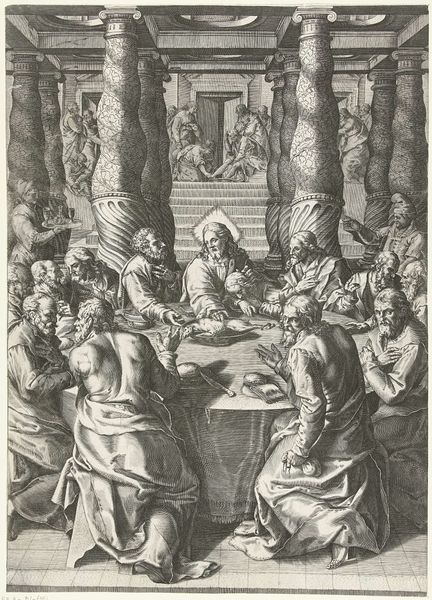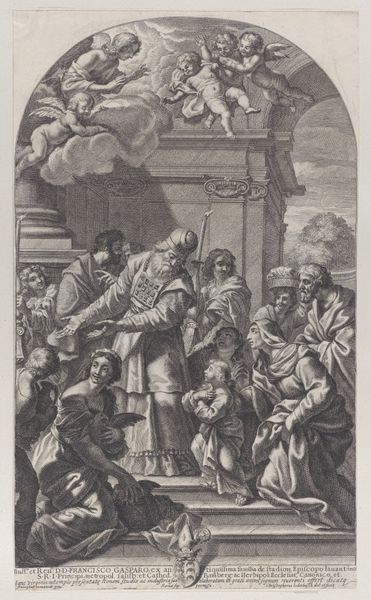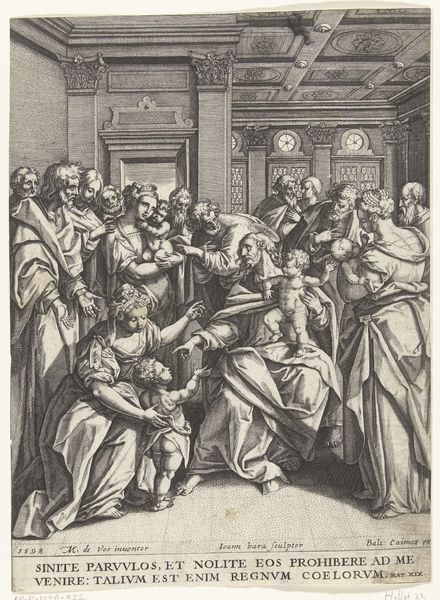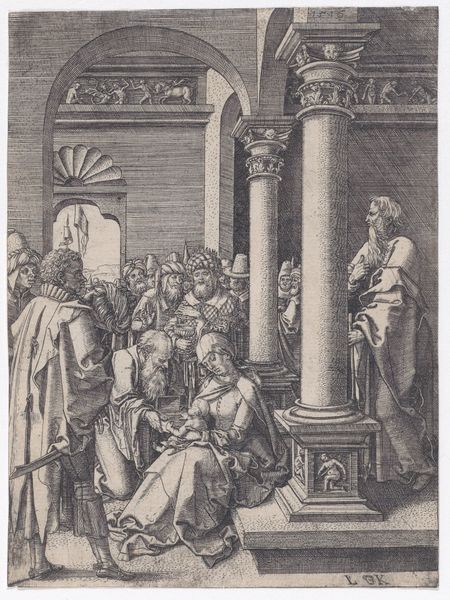
The Last Supper, the interior of a classical building with Christ and his apostles seated at a table 1662
0:00
0:00
drawing, print, engraving
#
drawing
#
narrative-art
#
baroque
# print
#
figuration
#
line
#
history-painting
#
engraving
Dimensions: Sheet (Trimmed): 12 3/8 × 7 11/16 in. (31.4 × 19.5 cm)
Copyright: Public Domain
Curator: This is Cornelis Bloemaert’s "The Last Supper," an engraving from 1662 currently housed here at the Metropolitan Museum of Art. What’s your initial read? Editor: The atmosphere strikes me as intensely dramatic, yet confined. The stark linear detail emphasizes the tension within this small gathering. The weight of betrayal is almost palpable in their closeness. Curator: Yes, Bloemaert masterfully employs linear strokes to amplify the narrative. Look at the building itself: classical motifs that lend gravity to this charged event. In a symbolic sense, what do you think these pillars signify? Editor: To me, the rigid architecture could symbolize the inflexible institutions complicit in Jesus's persecution. It emphasizes how systems of power, represented by the unforgiving architectural setting, set the stage for individual tragedy. It feels incredibly relevant to ongoing societal failures. Curator: Interesting perspective. I've always seen those details of the classical building pointing more toward the eternal and established foundations of faith on which Christianity is built. What about Christ himself? What meaning do you derive from the presentation of Jesus and his disciples in the Baroque style, rendered here in engraving? Editor: Christ's centralized position amidst the swirling emotions of the apostles definitely brings the weight of faith to bear. Yet even more interesting to me is where Bloemaert positions the apostles. It's an intimate assembly with the air practically bursting with intrigue. It draws attention to their personal stories. What are your impressions on this element of character and their human drama? Curator: It’s true; Bloemaert skillfully uses light and shadow to guide us to their emotional states, creating a sense of communal fear. One that speaks to enduring questions of loyalty and belief in the face of adversity, both themes common to humanity for centuries. Editor: Absolutely. These familiar archetypes—the betrayed, the betrayer, the faithful— resonate through time, questioning power structures, moral obligations, and the painful cost of revolutionary thought, particularly regarding gender and identity. Curator: I agree completely; Bloemaert successfully translates this biblical story into a universal human drama. Its meanings continuously unfold throughout different times. Editor: Right. Revisiting these artistic moments provides us with reflections on present struggles. Perhaps more empathy to navigate through complexities and collective experiences across time.
Comments
No comments
Be the first to comment and join the conversation on the ultimate creative platform.
